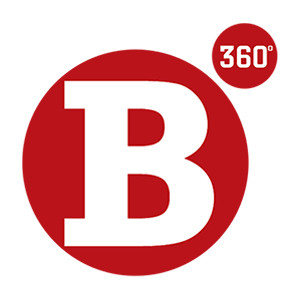
In an era characterised by rapid technological advancements and global interconnectedness, ‘Technology Transfer’ has emerged as a pivotal mechanism fostering collaboration between industries based in low-income countries and foreign investors. Within Nepal’s evolving economic landscape, this concept has become a critical catalyst, propelling the nation into the global arena of innovation and collaboration. Since the inception of the technology transfer regime in 1991, technology transfer arrangements have played a pivotal role in shaping Nepal’s industrial and technological landscape. This legislative milestone not only opened doors to foreign investments but also recognised the paramount importance of technology transfer as a key pillar in the nation’s economic development. Over the years, this framework has facilitated the exchange of technological know-how, fostering a culture of collaboration and innovation.
Foreign Investment and Technology Transfer Act, 2019 (FITTA 2019) serves as the cornerstone of Nepal’s technology transfer regime. This legislation defines technology transfer comprehensively, encompassing elements, to be outlined comprehensively in agreements, including but are not limited to: (i) intellectual property assets such as patents, designs, trademarks, goodwill, technological specialisations, and proprietary formulas or processes; (ii) licensing arrangements granting users access to valuable innovations, sharing of proprietary know-how, or participation in franchise systems; and (iii) the provision of foreign technical consultancy, management expertise, marketing services and other technical skills or knowledge.
Application and Approval Process
In the context of Nepal, an individual seeking to engage in technology transfer must submit an application to the Department of Industry (DoI) for approval. The approval process typically spans approximately three months. Unlike other forms of foreign investment, such as equity investment, technology transfer is permissible in industries listed under the negative list of FITTA 2019, such as primary agricultural production.
In the case of a licensing agreement, intellectual property (such as trademark or patent) covered under such an agreement needs to be registered in Nepal. Generally, FITTA 2019 grants parties the autonomy to define the terms of technology transfer in the agreement concluded between an industry and a foreign investor. However, in practice DoI has been granting approval for technology transfer agreements for a maximum period of five years on a future renewal basis, without extending an additional period of five years in each renewal.
Royalty Regime
Before the enactment of Foreign Investment and Technology Transfer Regulation, 2021 (FITTR 2021), there was no cap in royalty, and the other associated fees and costs such as front-end fees, set up fees, etc., deposits from industries were allowed to pay out over the top of agreed royalty. Since the implementation of FITTA Regulation there is a cap in royalty payment which is either made on ‘Total Sales Amount’ or ‘Net Profit’, and such basis is stipulated in the concerned royalty agreement applicable to each fiscal year.
In the present context, specific caps on royalty rates apply to various types of technology transfers. For local sales, the limit for royalty or other fees is set at up to 5% of the total sales amount, excluding VAT. Meanwhile, for export sales, the cap is slightly higher, allowing for up to 10% of total sales, excluding VAT. Additionally, there are provisions for royalty based on net profit, with limits set at up to 15% of net profit for local sales and up to 20% for export sales.
Moreover, concerning trademarks, the caps vary between industries. For the alcohol and tobacco sector, the limit for local sales is up to 2% of total sales, excluding VAT, and for export sales, it’s up to 5%. In contrast, other industries have different caps, allowing for up to 3% of total sales, excluding VAT, for local sales and up to 6% for export sales. This regulation seeks to establish a structured framework for managing and controlling royalty payments in the current business landscape. However, FITTA 2019 is silent in this regard and only imposes a cap on the liquor industry, stipulating that the amount of royalty or net profit for the use of trademarks in a liquor industry, excluding cases where 100% of liquor is exported, shall not exceed the prescribed 5% of the gross sales revenue, excluding prevailing tax.
In practice, there is no clear mechanism to calculate royalty when industries are involved in both local and export sales. Regulating authorities have been providing rates on royalties to be repatriated on a case-by-case basis. Such approved royalty and associated fees are allowed to be repatriated post obtaining approval from the DoI and the central bank of Nepal.
Furthermore, the regulation stipulates that if an industry has entered into one or more Technology Transfer Agreements with a foreign investor, the repatriated net royalty amount or any fee in a fiscal year is limited to the prescribed cap set in the regulation. It is also unclear whether the cap remains applicable when a local industry has entered into technology transfer agreements with more than one foreign investor.
Similarly, it is not clear if the law permits any fee in addition to the royalty. In international practice, apart from royalty, technology transfer agreements may also involve additional fees such as front-end fees, set-up fees, etc. The DoI holds the view that an investor cannot receive any amount beyond the royalty cap. However, the specified royalty rate is comparatively low, potentially lacking appeal to investors. To alleviate this concern, a clear demarcation is crucial to prevent confusion. It is suggested that service fees under the Service Agreement should operate independently of the royalty cap. This separation is proposed to enhance attractiveness to foreign investors, considering the regulatory limitations on royalty payments.
Similarly, in the current technology transfer framework, services like foreign technical advisory, management, marketing and other technological expertise are viewed as integral parts of technology transfer. As a result, they necessitate additional approvals and compliance with royalty caps. The regulatory authority insists that service fees in Service Agreements should match the royalty caps defined for Technology Transfer Agreements. This approach limits foreign service providers from receiving fees based on commercially negotiated prices, introducing a standardised compensation approach within regulatory boundaries. The lack of demarcation between pure service pursuant to the Nepal Rastra Bank (NRB) Unified Directives and technical service under FITTA 2019 has also impacted foreign service providers, leading to a call for a clear demarcation between service fees and royalty.
Enforcement and Dispute Resolution
In the context of the form of franchise agreements, governing law, and dispute resolution, Nepal allows flexibility as there are no restrictions on the format of licensing agreements, granting parties the freedom to agree upon terms and conditions as they deem fit. Notably, Nepal is a signatory to the New York Convention, and its legal framework supports the enforcement of foreign arbitral awards. However, it is essential to consider the reciprocity criterion for the enforcement of foreign arbitral awards. Past instances reveal challenges, such as awards held in India not being enforced in Nepal, showcasing the nuanced dynamics of cross-border legal reciprocity. It is also noteworthy that Nepali law currently lacks provisions for the enforcement of foreign court judgements, highlighting a potential area for further legal development.
Conclusion
As Nepal navigates its technology transfer regime, the legal framework and regulatory dynamics continue to evolve. Clarity in demarcating service fees from royalty caps, addressing concerns over low royalty rates, and ensuring robust dispute resolution mechanisms are crucial for fostering a conducive environment for foreign investment and collaboration. While the technology transfer regime is welcoming, it is perceived that it is overly restrictive, potentially dissuading foreign investors when compared to the previous regime. To fortify Nepal’s position as an attractive destination, continuous updates and alignment with international standards are imperative for sustaining a vibrant and competitive technology transfer landscape in the country.
|
|






